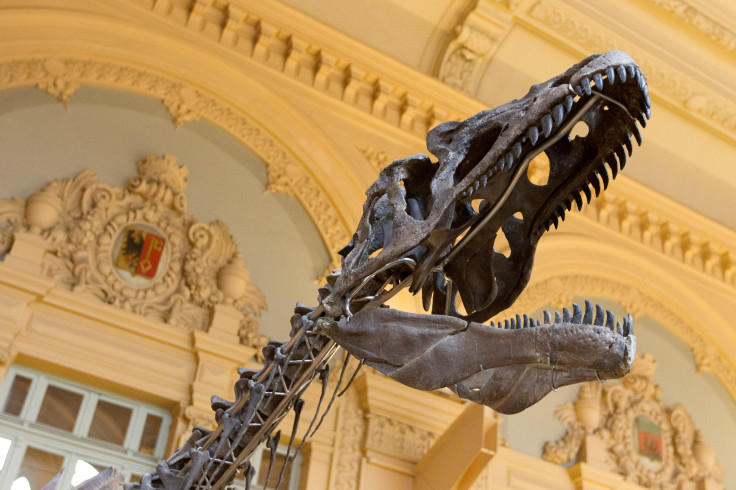How Did Dinosaurs Beat The Heat? Answer Lies In Blood Vessel Clusters

Our natural way of regulating body temperature is simply through perspiring, something not all animals can do. In fact, only primates, like monkeys and apes, and horses possess enough sweat glands that allow them to sweat as much as we do.
Cats and dogs sweat through their paws, but this is not their main cooling method. Cats may sprawl on cool surfaces or seek shade and dogs pant. Pigs like to roll in the mud; some birds poo on their own legs, but how did their ancestors, the dinosaurs, do it?
There are actually several ways and it depended on the type of dinosaur. It is likely long-neck sauropods panted to stay cool, while armor-plated Ankylosaurus depended on intricate nasal passages.
Despite their huge bodies, it was previously proposed that dinosaurs kept body temperatures not unlike those of today’s mammals. With a surface-area-to-volume ratio that increased as dinosaurs got bigger (the Dreadnoughtus has a weight equivalent of a dozen elephants or seven tyrannosaurs), this sounds unfathomable.
Thermoregulation was a possible explanation, where blood vessels radiated excess heat while assisted by evaporative cooling in moist parts of the body like the nose and mouth.
Two vertebrate paleontologists from the Ohio Center for Ecology and Evolutionary Studies in Athens wanted to find out about thermoregulation in dinosaurs. To do this, they traced the blood vessel networks within skulls of fossil dinosaurs and their modern relatives, birds and reptiles.
Ankylosaurs had thick bundles of blood vessels in their noses which helped with cooling. Sauropods had similar blood vessel bundles but in their large mouths and nostrils, indicating that they panted to stay cool. Theropods like T. rex and Allosaurus likely used their sinuses and additionally had an air cavity connected to jaw muscles also abundant in blood vessels.
That said, dinosaurs in movies like Jurassic Park always had their mouths open, but not because they were feeling warm. A T. rex with teeth and open jaws is just that much more exciting and impressive.
© Copyright IBTimes 2025. All rights reserved.





















